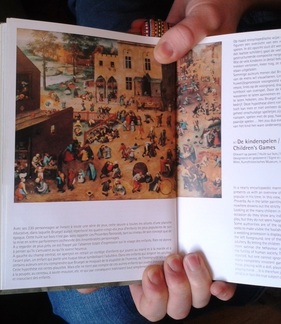
When I worked at a large girls’ school which boasted an excellent library, I was known by the librarians for checking out the weighty tomes which, more often than not, no pupil or indeed teacher had ever borrowed. One such book was the acclaimed study by Iona & Peter Opie, The Lore and Language of Schoolchildren, which took me weeks to plough through, but not without reward! One of the things that interested me was their conclusion that the learning of games in the main by-passes adults: it is mostly children who communicate and pass them on to other children.
When I was a girl, it was fashionable to hold seances, and I remember the time I set up a circle of letters round a glass in my older sister’s bedroom (most of the family were out), and I and two cousins began to summon the spirits. As the glass started to move we rose as one and fled screaming from the room! Later in life I met a 1960s alumna of above school who recalled the time when a seance had been organised in one of the dormitories.
“Is there anybody there?” was asked.
At this, the glass began to move, and after affirming that there was, spelt out the word F-I-R-E. Seconds later, the school fire-bell went off, and it transpired that at that moment a fire had been discovered in the Domestic Science block, formerly the great house’s stables. Needless to say, the girls were terrified, and the story spread round the school rapidly. The Bishop of Dover was summoned by the Headmistress and spoke at Assembly the following Sunday on the evils of tampering with the dark arts of the Ungodly.
Reading Pepys’ Diary last night, I was delighted to come across a mention of a lunch-time game we played at Tunbridge Wells Grammar School in the late 1960s/early 1970s, which was clearly being played by children at least 400 years earlier. I recall six of us standing around another girl, who lay on a table in the empty art room. We went round the circle, ceremoniously uttering in turn the words:
“She looks pale.” This was followed, one line at a time, and each reciting by rote, by the following:
“She is pale.”
“She looks ill.”
“She is ill.”
“She looks dead.”
“She is dead.”
And with this, we each slipped one forefinger under the prone girl and, together, lifted her several feet in the air with seemingly no effort at all, as if she was weightless. We had no idea how it worked, but it did work, and it afforded us great satisfaction!
So when I came across Pepys’ entry for 31 July 1665, I called out to my husband: “Listen to this!” (he had also, I knew, played the game at school):
This evening with Mr Brisband speaking of inchantments and spells, I telling him some of my Charmes, he told me this of his own knowledge at Bourdeaux in France. The words these:
Voicy un Corps mort
Royde comme un Baston
Froid comme Marbre
Leger comme un Esprit
Levons te au nom de Jesus Christ.
He saw four little Girles, very young ones, all kneeling, each of them upon one knee; and one begin the first line, whispering in the care of the next, and the second to the third, and the third to the fourth, and she to the first. Then the first begun the second line, and so round quite through. And putting each one finger only to a boy that lay flat upon his back on the ground, as if he was dead. At the end of the words they did with their four fingers raise this boy as high as they could reach. And he being there and wondering at it (as also being afeared to see it - for they would have had him to have bore a part in saying the words in the room of one of the little girls, that was so young that they could hardly make her learn to repeat the words), did, for fear there might be some sleight used in it by the boy, or that the boy might be light, called the cook of the house, as Sir G. Carteret’s Cooke, who is very big, and they did raise him in just the same manner.
Fascinating, eh? Love to hear from any of you with your experiences and stories about children’s games - comments welcome!

 RSS Feed
RSS Feed
